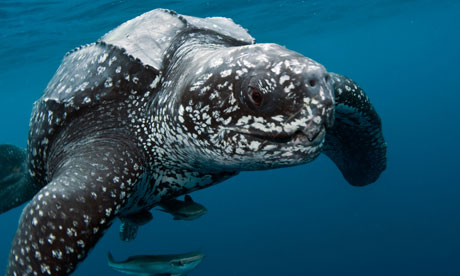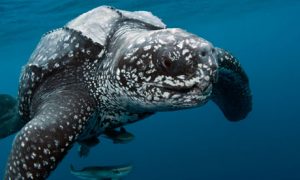Eighty Sea Turtles Wash up Dead on the Coast of Guatemala
by Michelle Martinek, RJD Intern
The volcanic black sand beaches of Guatemala’s southeastern coast are usually a vision of natural beauty for residents and visitors, but lately they have been witness to a tragic event- the mass stranding of sea turtles. According to a statement released by the wildlife rescue and conservation association, ARCAS, eighty dead sea turtles have been recorded on the shores of La Barrona, Las Lisas, Chapeton, and Hawaii since the first week of July. Environmentalists suspect there may be a connection between nearby shrimping boats and the recent sea turtle strandings. Agriculture Ministry officials in Guatemala say the cause of the deaths will be investigated.
The majority of the dead animals were olive ridley sea turtles (Lepidochelys olivacea), Pacific green sea turtles (Chelonia mydas) and leatherbacks (Dermochelys coriacea). Olive ridley sea turtles are currently listed as Vulnerable by the IUCN and leatherback sea turtles are Critically Endangered. The entire coast of Guatemala, which borders the Pacific Ocean, has historically been an important nesting area for both olive ridley and leatherback sea turtles. Although not known to nest in Guatemala, east pacific green turtles forage in estuaries and mangrove waterways along the Pacific coast (Lutz and Musick).
Located between Mexico and El Salvador, the 250 miles of coastline in Guatemala is a small expanse of ideal habitat. It has rivers, mangroves, wetlands, lagoons, beaches, and attracts many sea turtles for feeding and nesting purposes. Residents are troubled by the recent deaths because the sea turtles are a valuable resource. Not only do they draw many tourists, but despite the endangered status of the turtles, their eggs are a source of food and income for locals. The success of sea turtle conservation in the area relies on 24 hatcheries, managed as part of a legal egg harvest. ARCAS is a non-profit NGO founded in 1989 which, among many other things, manages two of the 24 sea turtle hatcheries on the Pacific coast of Guatemala. Villagers are allowed to collect eggs laid on the beaches provided that 20 percent of each clutch is donated to a hatchery. This system was initiated in 1980 in an effort to conserve sea turtle populations. However, many of the hatcheries are underfunded and operating with limited scientific training. Short-staffing means that beach monitoring and research activities are rare events, making it hard to collect accurate data on the sea turtle strandings and status of the nestings.
The numerous dead sea turtles washing up on the beaches is suspected to be the result of the nearly unregulated shrimp harvesting industry operating in the nearby waters. Since sea turtles have lungs and must surface for air, they will drown if caught in the fine mesh nets used by shrimp boats. Although Guatemalan trawlers are required to use turtle excluder devices (TEDs), enforcement is difficult and fines are light.
In an interview for mongabay.com, Colum Muccio, ARCAS administrative director said, “I don’t think it’s a coincidence that when shrimp trawlers appear in the ocean that we begin having stranded turtles.” ARCAS, along with other conservationists and researchers, are petitioning the government for action to combat the killing of the sea turtles. The lack of regulation in the egg harvesting and shrimping industry has the potential to severely hurt populations. The large number of sea turtle mortalities in the past six months can be used as an eye opener to the conservation community and world at large; something will need to change in order to save the lives of these already endangered animals.
REFERENCES
Avery, Lacey. “Eighty sea turtles wash up dead on the coast of Guatemala.” Guardian Environment Network 28 Aug 2013, Web. 1 Nov. 2013.
Lutz, Peter L., and John A. Musick. The Biology of Sea Turtles. CRC Press, 1997. 143-145. eBook.






Leave a Reply
Want to join the discussion?Feel free to contribute!